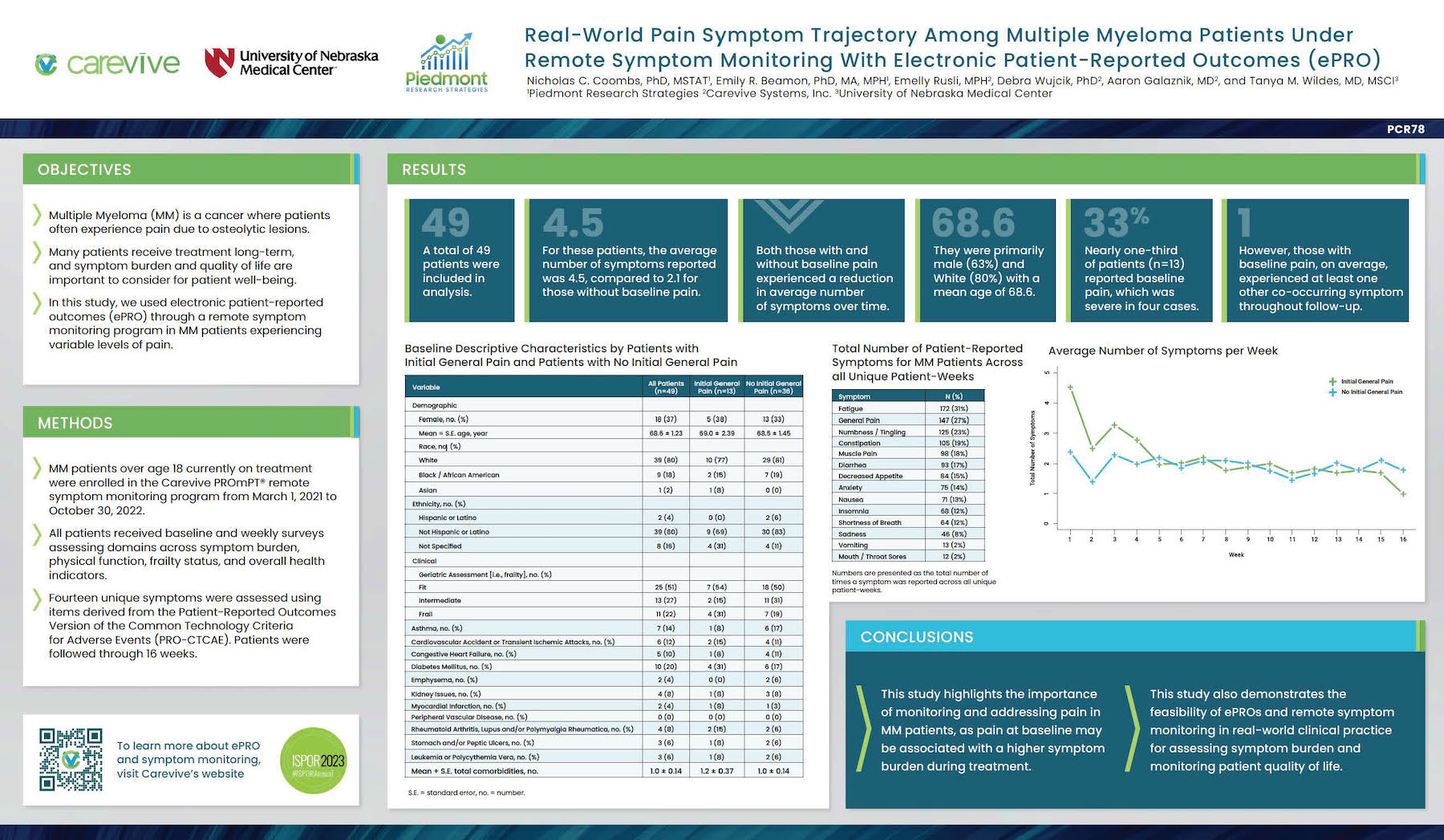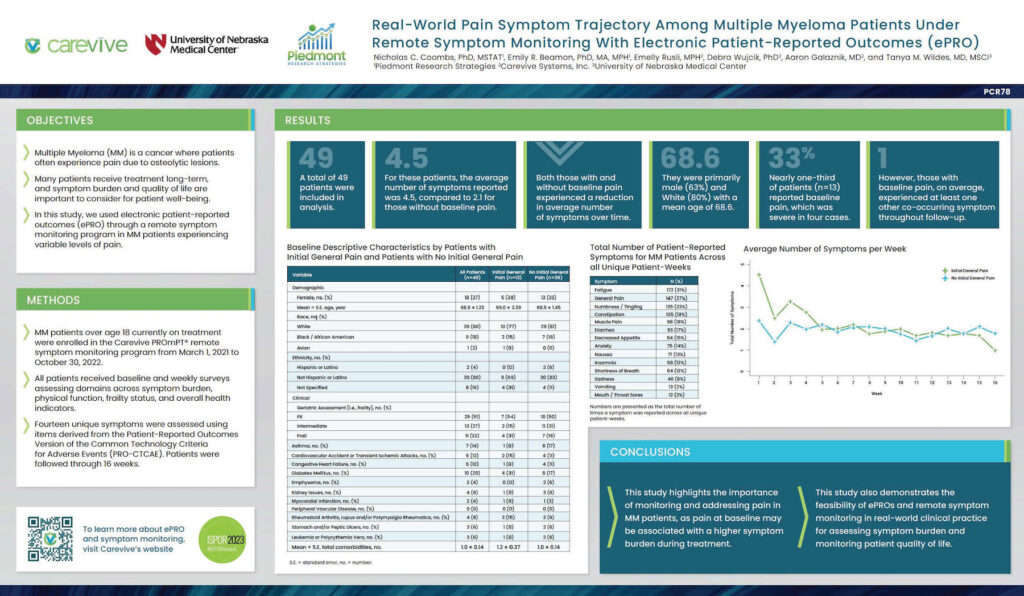
Authors: Nicholas C. Coombs, PhD, MSTAT1, Emily R. Beamon, PhD, MA, MPH11 Emelly Rusli, MPH2, Debra Wujcik, PhD2, Aaron Galaznik, MD2, and Tanya M. Wildes, MD, MSCI3
1 Piedmont Research Strategies
2 Carevive Systems, Inc.
3 University of Nebraska Medical Center
Objectives
- Multiple Myeloma (MM) is a cancer where patients often experience pain due to osteolytic lesions.
- Many patients receive treatment long-term, and symptom burden and quality of life are important to consider for patient well-being.
- In this study, we used electronic patient-reported outcomes (ePRO) through a remote symptom monitoring program in MM patients experiencing variable levels of pain.
Methods
- MM patients over age 18 currently on treatment were enrolled in the Carevive PROmpt® remote symptom monitoring program from March 1, 2021 to October 30, 2022.
- All patients received baseline and weekly surveys assessing domains across symptom burden, physical function, frailty status, and overall health indicators.
- Fourteen unique symptoms were assessed using items derived from the Patient-Reported Outcomes Version of the Common Technology Criteria for Adverse Events (PRO-CTCAE). Patients were followed through 16 weeks.
Results
- A total of 49 patients were included in analysis.
- For these patients, the average number of symptoms reported was 4.5, compared to 2.1 for those without baseline pain.
- Both those with and without baseline pain experienced a reduction in average number of symptoms over time.
- They were primarily male (63%) and White (80%) with a mean age of 68.6.
- Nearly one-third of patients (n=13) reported baseline pain, which was severe in four cases.
- However, those with baseline pain, on average, experienced at least one other co-occurring symptom throughout follow-up.
Conclusions
These findings suggest that patient experiences are comparable across variable levels of cytogenetic risk, prognosis severity and disease re-emergence. This may have bearing on treatment planning, particularly when weighing intensity of regimen. Although limited due to small sample sizes, results from this study underscore the value of routine follow-up, which should include PRO assessment throughout the entire therapeutic process.

